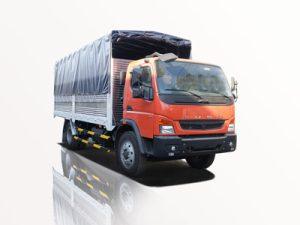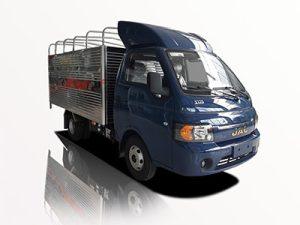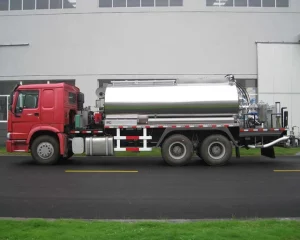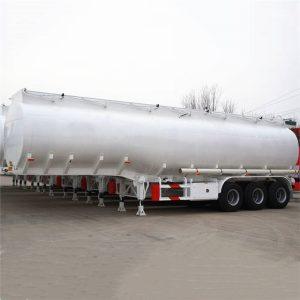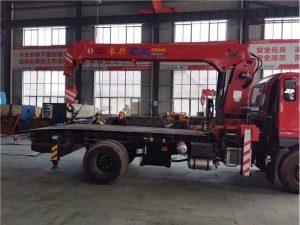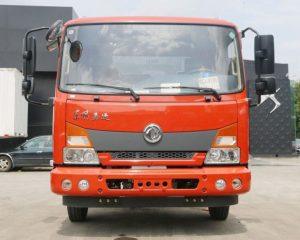Monday to Saturday - 8:00 -17:30
Everything You Need to Know About 40 Feet Flatbed Trailers
Introduction
Flatbed trailers are an essential piece of equipment in the transportation industry, often used for hauling heavy loads that require an open platform for loading and unloading. Among various sizes, the 40 feet flatbed trailer stands out due to its capacity and versatility. This article will explore everything you need to know about 40 feet flatbed trailers, including their construction, uses, benefits, and tips for maintenance and operation.
What is a 40 Feet Flatbed Trailer?
A 40 feet flatbed trailer is a type of non-enclosed trailer designed with a flat loading surface. It is typically 40 feet long, which provides sufficient space to transport various types of cargo, from construction materials to vehicles. The flat design allows for easy access for loading and unloading with forklifts and other equipment.
Key Features of 40 Feet Flatbed Trailers
- Length: 40 feet, allowing for substantial cargo capacity.
- Flat Surface: Provides an open area for versatile cargo transport.
- Weight Capacity: Can carry loads typically ranging from 20,000 to 48,000 pounds.
- Durable Construction: Often made from steel or aluminum to withstand heavy-duty use.
- Multiple Axles: Depending on the design, they may have two or more axles for increased stability.
Types of 40 Feet Flatbed Trailers
Several types of flatbed trailers exist, catering to different transportation needs. Here’s a breakdown of the types you may encounter:
Standard Flatbed Trailers
Designed for a variety of general cargo, these trailers are used across multiple industries and are ideal for transporting heavy appliances and machinery.
Step Deck Trailers
These trailers have two decks at different heights, allowing for taller cargo to be transported without exceeding road height restrictions.
Lowboy Trailers
Lowboy trailers are designed to carry heavy equipment like excavators and bulldozers. They have a lower deck height to accommodate oversized loads.
Drop Deck Trailers
Similar to step deck trailers, drop decks have a lower section to help transport taller cargo while remaining compliant with height regulations.
Applications of 40 Feet Flatbed Trailers
40 feet flatbed trailers are utilized in numerous sectors. Here are some common applications:
Construction Industry
Used for transporting construction materials like lumber, steel beams, and heavy machinery, flatbed trailers are vital on construction sites.
Automotive Transportation
They are frequently used to deliver cars and trucks from manufacturers to dealerships due to the ease of loading and unloading vehicles.
Agricultural Transport
Farm equipment and goods, such as hay bales or livestock, can also be carried using flatbed trailers.
Logistics and Freight
Flatbeds are ideal for transporting large quantities of goods over long distances, especially when quick loading and unloading are necessary.
Benefits of Using a 40 Feet Flatbed Trailer
Investing in a 40 feet flatbed trailer comes with various advantages:
Versatility
Flatbed trailers can carry various cargo types, making them suitable for multiple purposes.
Easy Loading and Unloading
With no walls or roof, loading and unloading become much more straightforward, especially when using cranes or forklifts.
Cost-Effective Transportation
They can often carry more cargo than traditional enclosed trailers, reducing transportation costs per unit.
Enhanced Stability
Flatbed trailers with multiple axles provide better balance and weight distribution for heavy loads.
Choosing the Right 40 Feet Flatbed Trailer
When selecting a flatbed trailer, consider the following factors:
Cargo Type
Identify the kind of cargo you will transport to choose a trailer that meets your needs.
Towing Vehicle Compatibility
Ensure that your towing vehicle can handle the weight and length of the trailer. Check towing specifications and limitations.
Material Quality
Choose between steel and aluminum frames based on weight considerations and durability. Aluminum is lighter but may be more expensive.
Safety Features
Look for trailers equipped with safety chains, reflectors, and lights for visibility and security during transport.
Maintenance Tips for 40 Feet Flatbed Trailers
Proper maintenance ensures the longevity and effectiveness of a flatbed trailer. Here are some practical maintenance tips:
Regular Inspections
Conduct routine inspections of tires, brakes, lights, and overall trailer structure to catch any issues before they become serious.
Tire Maintenance
Check tire pressure regularly and inspect for signs of wear. Rotate and replace tires as needed to ensure safe transport.
Brake System Checks
Maintain the brake system by checking fluid levels and inspecting pads and rotors regularly to ensure reliable stopping power.
Cleaning
Keep the trailer clean to prevent rust and corrosion. Use a power washer to remove debris and grime regularly.
Cost of Owning a 40 Feet Flatbed Trailer
Understanding the costs involved is crucial if you’re considering purchasing a flatbed trailer. Here’s a detailed breakdown:
Initial Purchase Price
The cost of a new 40 feet flatbed trailer typically ranges from $10,000 to $30,000, depending on the brand, material, and features.
Insurance Costs
Annual insurance costs can vary widely but generally range from $1,000 to $3,000, depending on your coverage plans and the trailer’s value.
Maintenance Expenses
Plan for annual maintenance costs, which can average between $500 and $2,000, depending on usage and wear and tear.
Fuel Costs
While trailers themselves do not consume fuel, consider fuel costs for the towing vehicle, which will increase based on the trailer weight and transported load.
Frequently Asked Questions (FAQs)
1. What is the maximum load a 40 feet flatbed trailer can carry?
The maximum weight varies but usually ranges between 20,000 to 48,000 pounds, depending on the trailer’s axle configuration and state regulations.
2. Can a 40 feet flatbed trailer be used for towing RVs?
Yes, flatbed trailers can tow RVs, though specialized equipment and secure tie-downs are necessary to ensure safe transport.
3. How do I secure cargo on a flatbed trailer?
Utilize tarps, straps, chains, and other securing devices to protect and maintain cargo stability during transport.
4. Are there weight restrictions for flatbed trailers on the highway?
Yes, different states impose weight restrictions that vary, so it is crucial to check local laws before transporting heavy loads.
5. What are some common hazards when using a flatbed trailer?
Common hazards include improper loading, unsecured cargo, and inadequate braking. Always ensure safety protocols are followed.
6. How can I prolong the life of my flatbed trailer?
Regular maintenance, cleaning, proper loading techniques, and timely repairs all contribute to the longevity of your flatbed trailer.



